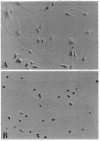Abstract
Electrically conducting polymers are novel in that their surface properties, including charge density and wettability, can be reversibly changed with an applied electrical potential. Such properties might render conducting polymers unique for biological applications. However, the majority of research on conducting polymers has been carried out under nonbiological conditions. We synthesized optically transparent polypyrrole thin films and studied them in environments suitable for protein adsorption and mammalian cell culture. In vitro studies demonstrated that extracellular matrix molecules, such as fibronectin, adsorb efficiently onto polypyrrole thin films and support cell attachment under serum-free conditions. When aortic endothelial cells were cultured on fibronectin-coated polypyrrole (oxidized) in either chemically defined medium or the presence of serum, cells spread normally and synthesized DNA. In contrast, when the polymer was switched to its neutral state by applying an electrical potential, both cell extension and DNA synthesis were inhibited without affecting cell viability. Application of a similar electrical potential to cells cultured on indium tin oxide surfaces had no effect on cell shape or function. These data suggest that electrically conducting polymers may represent a type of culture substrate which could provide a noninvasive means to control the shape and function of adherent cells, independent of any medium alteration.
Full text
PDF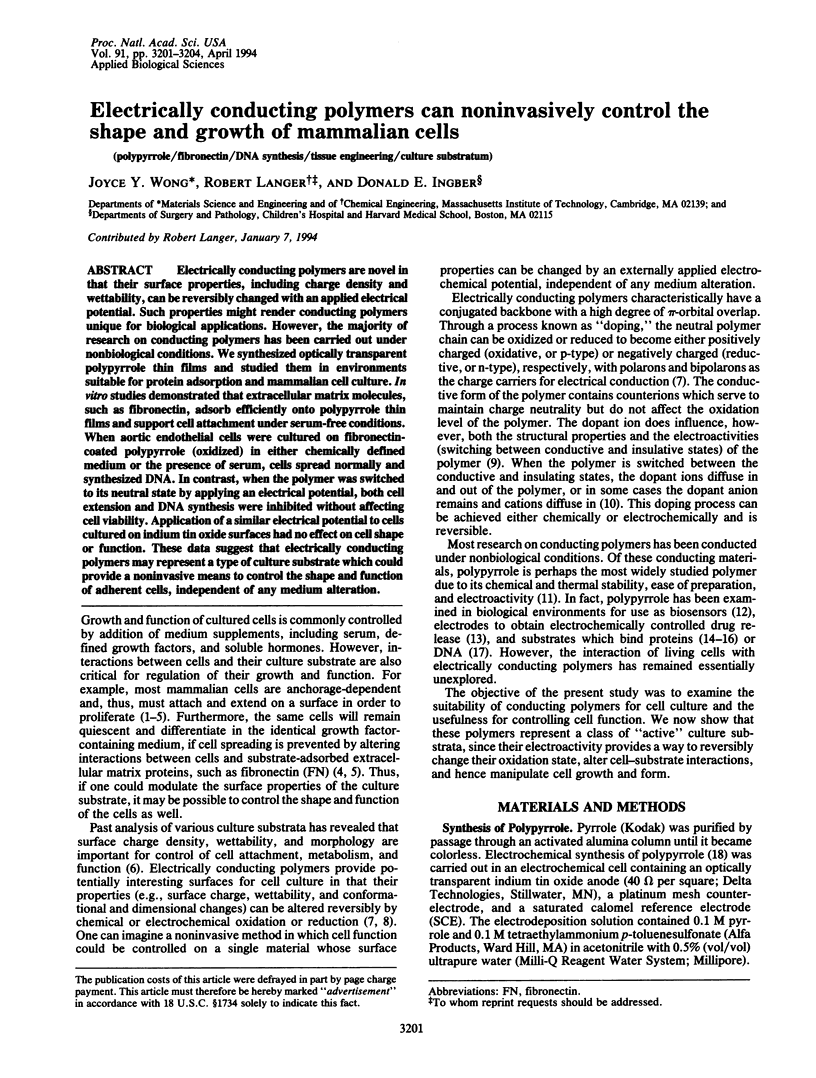
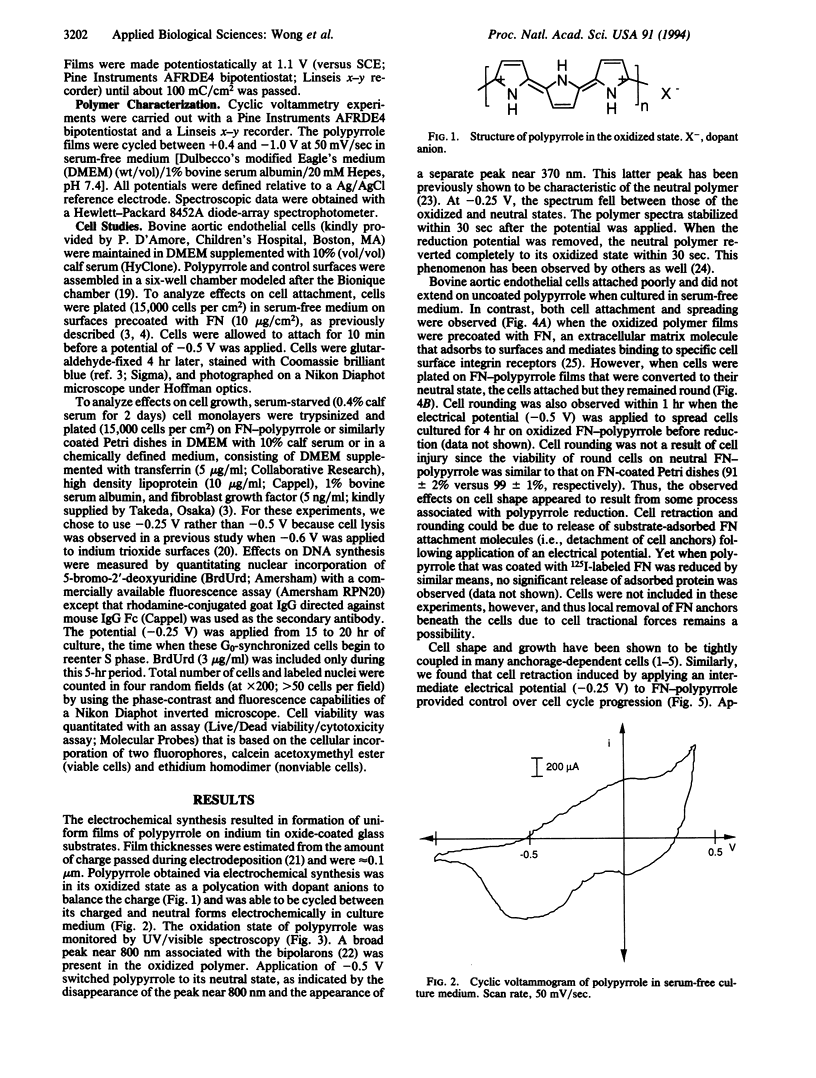
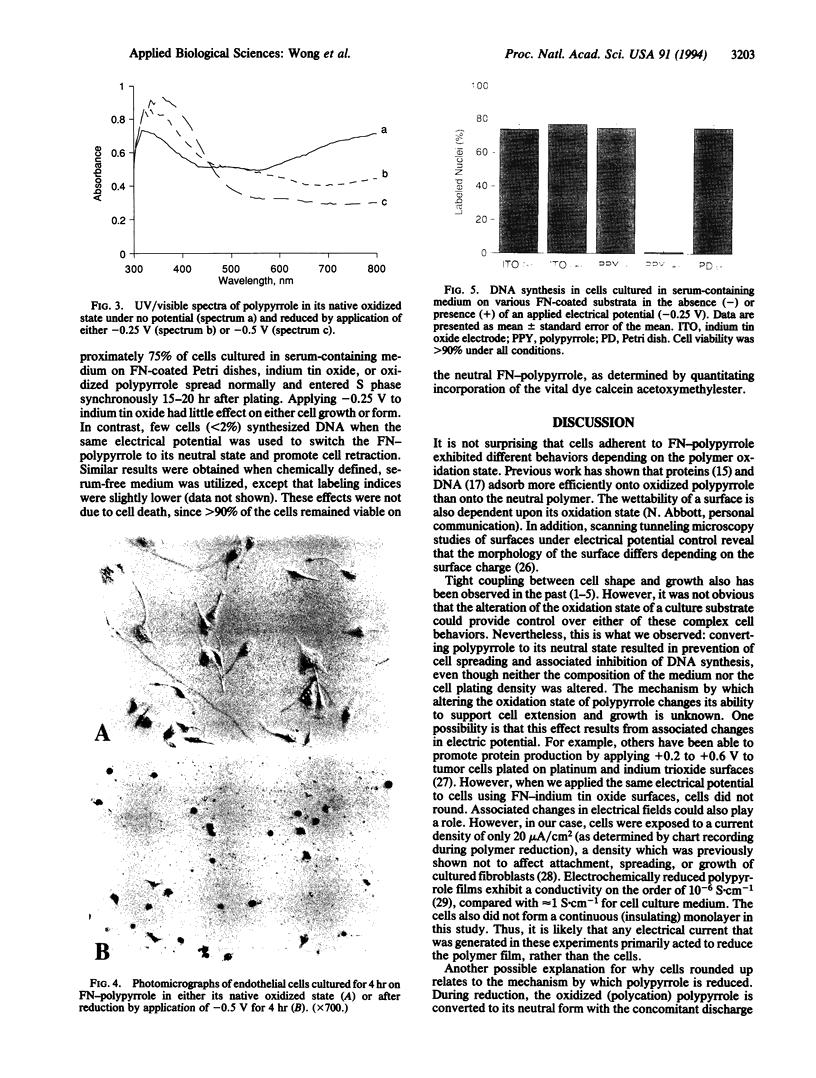
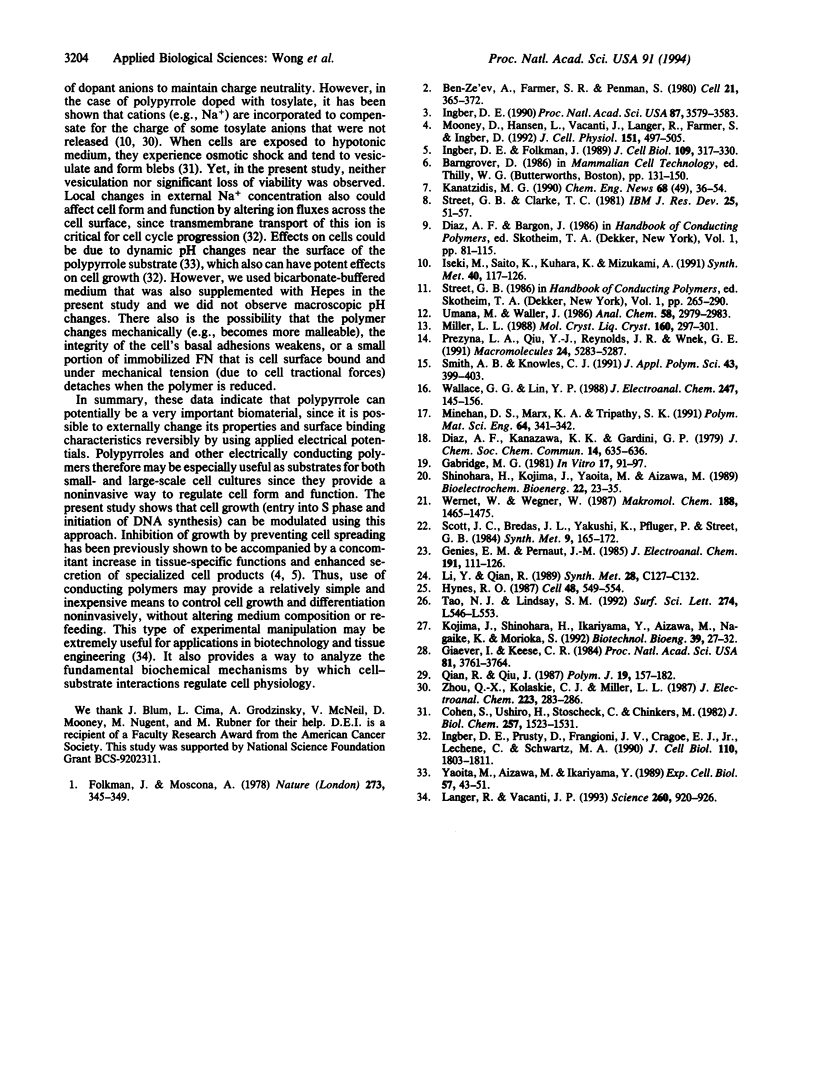
Images in this article
Selected References
These references are in PubMed. This may not be the complete list of references from this article.
- Ben-Ze'ev A., Farmer S. R., Penman S. Protein synthesis requires cell-surface contact while nuclear events respond to cell shape in anchorage-dependent fibroblasts. Cell. 1980 Sep;21(2):365–372. doi: 10.1016/0092-8674(80)90473-0. [DOI] [PubMed] [Google Scholar]
- Cohen S., Ushiro H., Stoscheck C., Chinkers M. A native 170,000 epidermal growth factor receptor-kinase complex from shed plasma membrane vesicles. J Biol Chem. 1982 Feb 10;257(3):1523–1531. [PubMed] [Google Scholar]
- Folkman J., Moscona A. Role of cell shape in growth control. Nature. 1978 Jun 1;273(5661):345–349. doi: 10.1038/273345a0. [DOI] [PubMed] [Google Scholar]
- Gabridge M. G. The Chamber/Dish: an improved vessel for cell and explant culture. In Vitro. 1981 Feb;17(2):91–97. doi: 10.1007/BF02618064. [DOI] [PubMed] [Google Scholar]
- Giaever I., Keese C. R. Monitoring fibroblast behavior in tissue culture with an applied electric field. Proc Natl Acad Sci U S A. 1984 Jun;81(12):3761–3764. doi: 10.1073/pnas.81.12.3761. [DOI] [PMC free article] [PubMed] [Google Scholar]
- Hynes R. O. Integrins: a family of cell surface receptors. Cell. 1987 Feb 27;48(4):549–554. doi: 10.1016/0092-8674(87)90233-9. [DOI] [PubMed] [Google Scholar]
- Ingber D. E. Fibronectin controls capillary endothelial cell growth by modulating cell shape. Proc Natl Acad Sci U S A. 1990 May;87(9):3579–3583. doi: 10.1073/pnas.87.9.3579. [DOI] [PMC free article] [PubMed] [Google Scholar]
- Ingber D. E., Folkman J. Mechanochemical switching between growth and differentiation during fibroblast growth factor-stimulated angiogenesis in vitro: role of extracellular matrix. J Cell Biol. 1989 Jul;109(1):317–330. doi: 10.1083/jcb.109.1.317. [DOI] [PMC free article] [PubMed] [Google Scholar]
- Ingber D. E., Prusty D., Frangioni J. V., Cragoe E. J., Jr, Lechene C., Schwartz M. A. Control of intracellular pH and growth by fibronectin in capillary endothelial cells. J Cell Biol. 1990 May;110(5):1803–1811. doi: 10.1083/jcb.110.5.1803. [DOI] [PMC free article] [PubMed] [Google Scholar]
- Langer R., Vacanti J. P. Tissue engineering. Science. 1993 May 14;260(5110):920–926. doi: 10.1126/science.8493529. [DOI] [PubMed] [Google Scholar]
- Mooney D., Hansen L., Vacanti J., Langer R., Farmer S., Ingber D. Switching from differentiation to growth in hepatocytes: control by extracellular matrix. J Cell Physiol. 1992 Jun;151(3):497–505. doi: 10.1002/jcp.1041510308. [DOI] [PubMed] [Google Scholar]
- Yaoita M., Aizawa M., Ikariyama Y. Electrically regulated cellular morphological and cytoskeletal changes on an optically transparent electrode. Exp Cell Biol. 1989;57(1):43–51. doi: 10.1159/000163506. [DOI] [PubMed] [Google Scholar]




